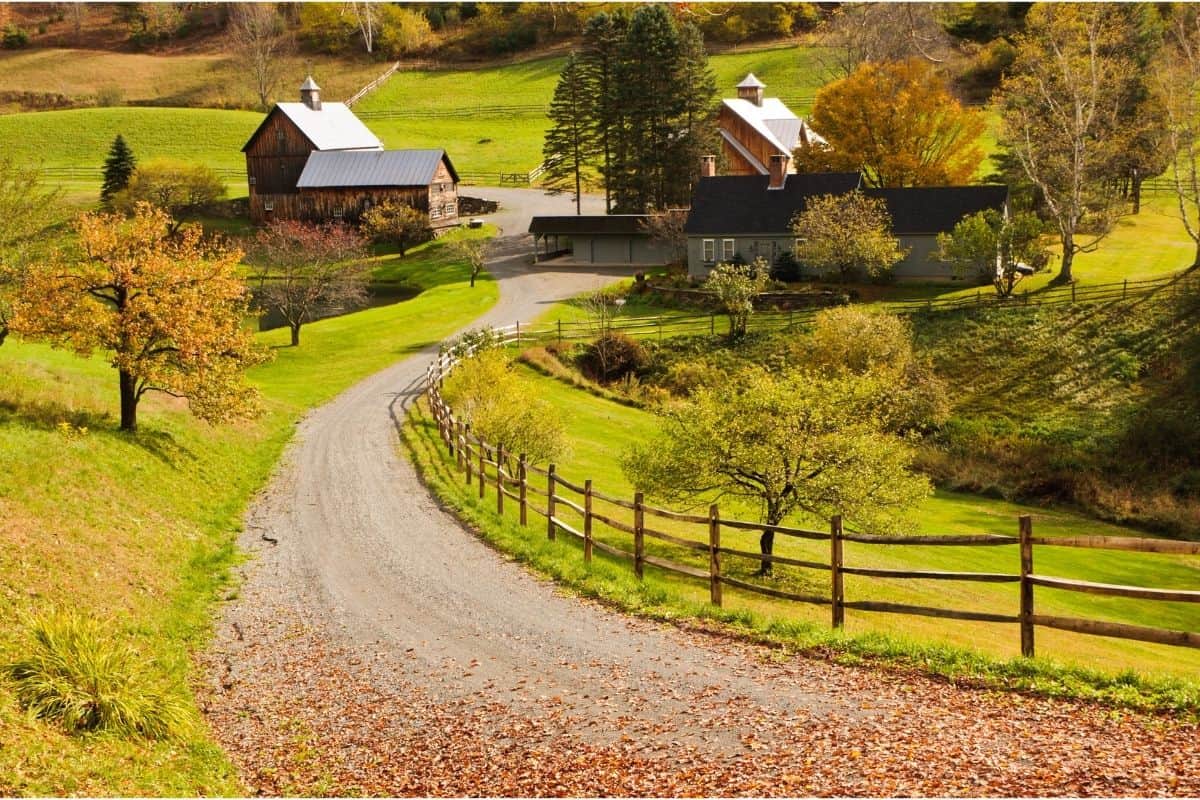Are you a homesteader dreaming of an eco-friendly and sustainable lifestyle? If so, the concept of a cob house on a 15 acre homestead might be the perfect solution for you. This idea not only supports sustainable living but also allows for creative expression and a deep connection with nature. In this article, we will explore various 15 acre homestead cob house ideas that can transform your dreams into reality.

What is a Cob House?
A cob house is an eco-friendly and natural building made primarily from subsoil, water, fibrous organic material (like straw), and sometimes lime. These materials are mixed together to form a durable, strong, and sustainable building material. Cob houses have been used for centuries and are known for their thermal efficiency and natural beauty.
Why Choose a Cob House for Your Homestead?
There are numerous reasons why a cob house is an excellent choice for your 15 acre homestead. Firstly, they are highly sustainable and environmentally friendly, as they are constructed with natural and locally-sourced materials. Additionally, cob houses are energy-efficient, providing excellent thermal insulation and reducing the need for artificial heating and cooling. Furthermore, cob houses offer creative freedom, allowing you to design a unique and personalized home.
Environmental Benefits of Cob Houses
One of the primary reasons to choose a cob house is its minimal environmental impact. Since cob is made from natural materials, it is non-toxic and recyclable. Moreover, cob houses have a low carbon footprint, as they eliminate the need for energy-intensive building materials and processes.
Designing Your Cob House
Designing a cob house on your 15 acre homestead allows for boundless creativity. You can design your home to blend seamlessly with the natural surroundings, taking advantage of the land’s natural features.
Layout and Floor Plan Ideas
When designing your cob house, consider an open floor plan that maximizes natural light and airflow. Incorporating large windows and skylights will enhance the connection between your home and the outdoors. Additionally, creating multifunctional spaces can increase the efficiency of your home.
Incorporating Natural Elements
To enhance the natural feel of your cob house, consider incorporating natural elements such as wooden beams, stone accents, and earthen floors. These features not only add to the aesthetic appeal but also contribute to the overall sustainability of your home.
Building Your Cob House
Building a cob house requires careful planning and execution. It is essential to understand the construction process and gather the necessary skills and tools.
Essential Tools for Cob House Construction
Some essential tools for building a cob house include a wheelbarrow, mixing tools, shovels, and trowels. Additionally, having a basic understanding of masonry and construction techniques will be beneficial. For more detailed guidance, consider visiting Rethink Rural for a comprehensive list of tools and equipment.
Construction Techniques
Building a cob house involves several steps, including preparing the site, mixing the cob, and applying it to create walls. It’s crucial to ensure that the cob is mixed properly to achieve the desired consistency and strength. Additionally, incorporating natural insulation materials, such as straw bales, can enhance the thermal performance of your home.
Living on a 15 Acre Homestead
Living on a 15 acre homestead offers numerous opportunities for self-sufficiency and sustainable living. From growing your own food to raising livestock, the possibilities are endless.
Gardening and Food Production
With ample land available, you can create a thriving garden to grow fruits, vegetables, and herbs. Implementing permaculture principles can enhance the productivity and sustainability of your garden. For more tips on maximizing your homestead’s potential, check out our article on Erosion Control.
Raising Livestock
Consider raising livestock such as chickens, goats, or sheep on your homestead. These animals provide a reliable source of food and can contribute to the overall sustainability of your homestead. For more information on raising livestock, explore our guide on Dairy Goats.
Generating Income from Your Homestead
In addition to providing food and resources, a 15 acre homestead can also generate income through various means. Diversifying your income streams can enhance the viability of your homestead.
Airbnb and Short-Term Rentals
Consider converting a portion of your homestead into a vacation rental. This not only generates income but also allows others to experience the beauty of sustainable living. Learn more about turning your homestead into a rental with our Airbnb Ideas.
Crafts and Handmade Goods
Utilize your creative skills to produce handmade goods, such as candles, soaps, or crafts. These items can be sold at local markets or online, providing a steady source of income.
Overcoming Challenges of Homesteading
While living on a 15 acre homestead offers numerous advantages, it also presents challenges that require careful consideration and planning.
Weather and Climate Considerations
Understanding the local climate and weather patterns is crucial for successful homesteading. Preparing your homestead for different seasons can prevent damage and ensure the well-being of your plants and animals. Discover more tips on preparing for winter in our article on Winter Prep.
Time and Resource Management
Effective time and resource management are essential for maintaining a successful homestead. Prioritizing tasks and utilizing resources efficiently can maximize productivity and reduce stress.

FAQs
What is the cost of building a cob house?
The cost of building a cob house varies depending on factors such as location, size, and design complexity. However, cob houses are generally more affordable than traditional homes due to the use of natural and locally-sourced materials.
How long does it take to build a cob house?
The construction time for a cob house depends on the size and complexity of the design, as well as the experience level of the builders. On average, it can take several months to a year to complete a cob house.
Are cob houses durable?
Yes, cob houses are known for their durability and longevity. When properly constructed and maintained, a cob house can last for generations.




